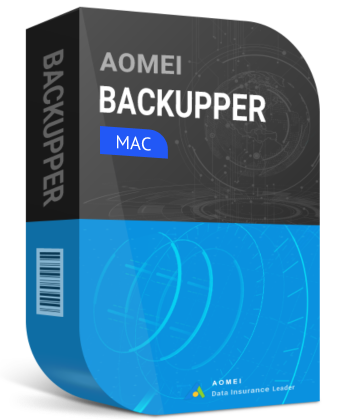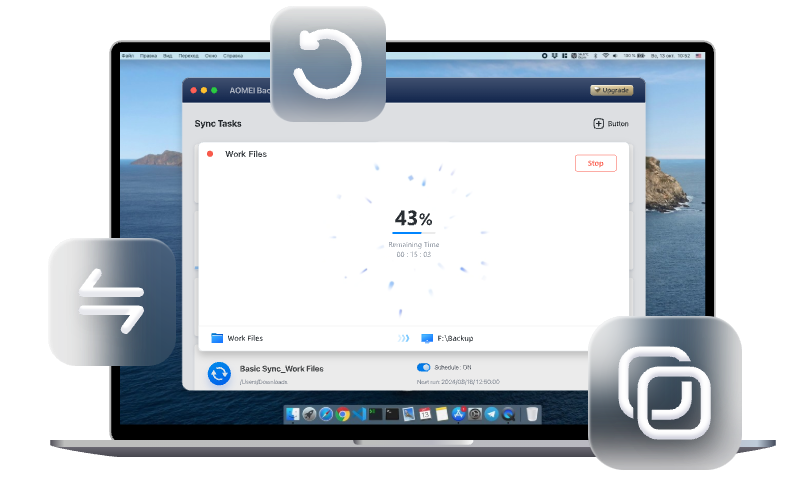File Management: How to Cut and Paste Files on Mac with Ease
This article delves into the intricacies of cutting and pasting files on a Mac, offering detailed solutions, step-by-step instructions, and insightful answers to common questions. It includes an introduction to AOMEI Backupper for robust file management and backup.
Introduction
Effective file management is crucial for productivity and organization, particularly for Mac users who rely on their devices for both personal and professional tasks. One essential skill in this domain is knowing how to cut and paste files on a Mac. This guide will walk you through the process, ensuring you can manage your files effortlessly.
Why Can't People Use the "Cut" Feature on a Mac?
If you're used to Windows, the lack of a "Cut" option for files on a Mac might be confusing. On a Mac, the "Cut" option in the "Edit" menu is only for text. You can’t cut and move files or folders this way. Instead, you'll need a workaround that mimics the functionality of cutting and pasting files in Windows.
The workaround we're going to use is similar to the "mv" command in Linux, which is used to move files from one location to another. Here are three methods to achieve the same result on a Mac, mimicking the cut-and-paste functionality you might be familiar with from Windows.
How to Cut and Paste Files on Mac
If you want to move files or folders on your Mac in a way similar to the "cut and paste" method on Windows, it might not be immediately clear how to do it. Here are some simple steps to help you out.
Solution 1: Use a Keyboard Shortcut to Move the File on Mac
While macOS may look different from Windows 10 and 11, many of its functions are quite similar. Just like Microsoft's operating system, macOS also has keyboard shortcuts to copy and paste text, media, and files.
To copy a selected item on your Mac:
- Press Command-C on your keyboard.
- Alternatively, choose "Copy" from the Edit menu in the menu bar.
- You can also Control-click (or right-click) the item, then select "Copy" from the shortcut menu.
To cut a selected item on your Mac:
- Press Command-X on your keyboard.
- Alternatively, choose "Cut" from the Edit menu in the menu bar.
- You can also Control-click (or right-click) the item, then select "Cut" from the shortcut menu.
To paste an item you've cut or copied on your Mac:
- Press Command-V on your keyboard.
- Alternatively, choose "Paste" from the Edit menu in the menu bar.
- You can also Control-click (or right-click) the item, then select "Paste" from the shortcut menu.
Solution 2: Use Edit and Context Menu for Mac File Management
If you prefer not to use keyboard shortcuts or if your Mac keyboard isn't functioning, you can still cut and paste files using Finder. Here’s how you can do it:
1. Open Finder and navigate to the file or folder you want to move.
2. Right-click (or Control-click) the selected item and choose "Copy" from the context menu.
3. You can also find the toolbar and select the "Copy" option under the "Edit" menu.
4. Go to the destination folder where you want to move the file or folder.
5. Right-click (or Control-click) inside the destination folder and choose "Paste Item" from the context menu.
Solution 3: Drag and Drop the Files to Cut and Paste on Mac
Using the drag-and-drop method is one of the easiest ways to move files on a Mac. Follow these steps:
- Click and hold the file you want to move.
- Drag the file to the desired folder.
Note: If you need to place the file in a subfolder, hover over the parent folder for a few seconds until it opens. Then, drag the file into the subfolder. Be aware that when moving a large number of files, hovering over the parent folder might take a bit longer.
Bonus: Use Third-Party File Syncing Software
If copying and pasting files directly isn't working for you, consider using third-party file sync software as an alternative. AOMEI Backupper Mac offers a great solution for syncing files. With its user-friendly interface and powerful features, it makes data protection straightforward. AOMEI Backupper Mac ensures your important files are synced reliably and efficiently, keeping them secure and well-organized.

-
Complete Mac File Syncing: Effortlessly sync files on your Mac for comprehensive data protection.
-
Flexible Sync Options: Choose from Basic Sync, Mirror Sync, or Two-Way Sync to fit your synchronization needs.
-
Multiple Storage Destinations: Sync to local storage, cloud drives, NAS devices, external hard drives, USB flash drives, SD cards, and more.
-
Quick and Secure Syncing: Enjoy high-speed synchronization with advanced technology, ensuring your data is encrypted and secure throughout the process.
Step 1: Install this syncing software AOMEI Backupper on your Mac. Click "New Task" to begin.
Step 2: Select the synchronization type that meets your needs. For syncing between two folders, choose Mirror Sync or Two-Way Sync.
Basic Sync: Transfers files from one location to another without removing the original files in the source folder.
Mirror Sync: Creates an identical copy of the source files in the destination. It will also delete any files in the destination that are no longer in the source.
Two-Way Sync: Ensures that files in both the source and destination locations are always up-to-date, reflecting changes made in either location.
Step 3: Choose the source and destination for your sync.
Step 4: Set up your sync schedules and adjust the options as needed.
You can choose how frequently you want to sync your files, whether it's once, hourly, daily, weekly, or monthly. Additionally, you can set a specific start time and decide if the system should hibernate or shut down after completing the sync process.
In the Options, you can customize the sync process by including or excluding specific files and folders.
Step 5: After configuring all settings, click "Sync" and let the process finish.
Frequently Asked Questions
Q 1: Can I cut and paste multiple files at once on a Mac?
A 1: Yes, you can select multiple files by holding the Command key while clicking each file. Then, follow the steps to cut and paste them simultaneously.
Q 2: What should I do if the cut-and-paste function is not working?
A 2: Ensure you are using the correct keyboard shortcuts (Command + C to copy, Command + Option + V to move). If the issue persists, try restarting your Finder or Mac.
Q 3: Are there any keyboard shortcuts for cut and paste in Finder?
A 3: Yes, use Command + C to copy and Command + Option + V to move (cut and paste) files in Finder.
Practical Tips for Efficient File Management
- Regular Organization: Periodically organize your files into folders and subfolders to keep your workspace clutter-free.
- Utilize Tags: Use Finder tags to categorize and quickly locate files based on color-coded labels.
- Backup Your Data: Regularly back up your files using Time Machine or third-party solutions like AOMEI Backupper to prevent data loss.
Conclusion
Mastering the art of cutting and pasting files on your Mac is essential for efficient file management and productivity. By following the solutions provided in this guide, you can effortlessly move your files and maintain an organized digital workspace. Incorporating tools like AOMEI Backupper can further enhance your file management strategy, ensuring your data is always protected and easily accessible. Embrace these techniques and tips to streamline your workflow and enjoy a seamless Mac experience.

